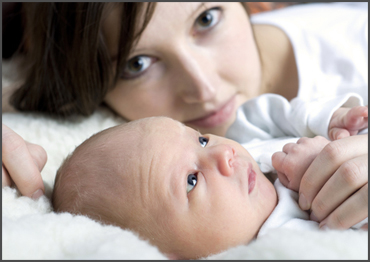
Dr. Dibyendu Chakrabarty
MBBS (Cal.) DCH (Cal.) MD (Pediatrics) International Fellows of American Academy of Pediatrics (USA)

MBBS (Cal.) DCH (Cal.) MD (Pediatrics) International Fellows of American Academy of Pediatrics (USA)

What is Newborn Care?
Neonatal means ‘new born’. Neonatal units like ours specialise in the care of babies born early, with low weight or who have a medical condition that requires specialised treatment.
Four levels of Care: Within the unit, there are four different levels of care -
1) Intensive Care - provided for babies who have serious problems, who are very premature (those born more than three months early) and/or have an extremely low birth weight (birth weight less than 1500 grams).
2) High Dependency Care - provided for babies with less serious problems but who still need a great deal of observation and support and for those who are recovering from critical illness.
3) Low Dependency - provided for babies who do not require continuous observation and/or who are stable and growing.
4) Transitional Care - is provided for babies who need some medical treatment but who are well enough to be cared for at their mother’s bedside.
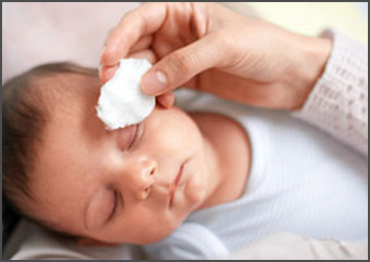
Premature babies and other very sick newborns face some of the same medical issues. Listed below are some medical conditions that may be seen in the neonatal intensive care unit (NICU). The conditions listed may not be relevant to your baby's situation. We encourage you to read only what you feel would be helpful to you and your child's particular circumstances
1) Anemia
Premature babies are often anemic. This means that they don't have enough red blood cells. Normally, the fetus stores iron during the latter months of pregnancy and uses it after birth to make red blood cells. Infants born too soon may not have had enough time to store iron.
can develop breathing problems due to complications of labor and delivery, birth defects, and infections. An infant with breathing problems may be given medicines, put on a respirator to help him breathe, or use a combination of thesetreatments.
A) Apnea: Premature babies sometimes don't breathe regularly. A baby may take a long breath, then a short one, then pause for five to 10 seconds before starting to breathe normally. This is called periodic breathing. It usually isn't harmful, and the baby will outgrow it.
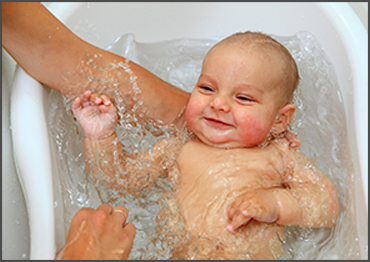
Premature and sick babies also may stop breathing for 15 to 20 seconds or more. This interruption in breathing is called apnea. It may be accompanied by a slow heart rate called bradycardia. Babies in the NICU are constantly monitored for apnea and bradycardia (often called "A's and B's").
Sensors on the baby's chest send information about his breathing and heart rate to a machine located near the incubator. If a baby stops breathing, an alarm will begin beeping.
A nurse will stimulate the baby to start breathing by patting him or touching the soles of his feet. The neonatologist might consider giving the baby medicine or using equipment, such as continuous positive airway pressure (C-PAP), which is delivering air to a baby's lungs through either small tubes in the baby's nose or through a tube inserted into the windpipe).
B) Bronchopulmonary dysplasia (BPD): This chronic lung disease is most common in premature babies who have been treated for respiratory distress syndrome (RDS).
Babies with RDS have immature lungs. They sometimes need a mechanical ventilator to help them breathe. Some babies treated for RDS may develop symptoms of BPD, including fluid in the lungs, scarring, and lung damage.
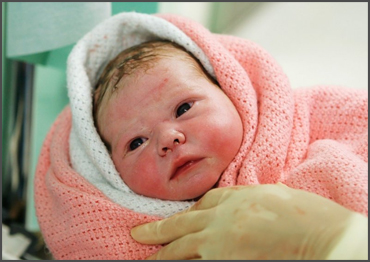
Babies with BPD are treated with medications to make breathing easier. They're slowly weaned from the ventilator. Their lungs usually improve over the first two years of life, but some children develop a chronic lung disease resembling asthma.
BPD also occasionally occurs in full-term newborns after they've had pneumonia or other infections.
C) Persistent pulmonary hypertension of the newborn (PPHN): Babies with PPHN cannot breathe properly because they have high blood pressure in their lungs. At birth, the blood vessels in the lungs normally relax in response to the first minutes of breathing air and allow blood to flow through them. This is how the blood picks up oxygen.
In babies with PPHN, this response doesn't occur. This leads to a lack of oxygen in the blood, and sometimes to other complications including brain damage. Babies with PPHN often have birth defects (such as heart defects) or have suffered from birth complications.
Babies with PPHN often need a ventilator (respirator) to help them breathe. They may be given a gas called nitric oxide through a tube in the windpipe. This treatment may help the blood vessels in the lungs relax and improve breathing.
D) Pneumonia: This lung infection is common in premature and sick newborns. A baby's doctors may suspect pneumonia if the baby has difficulty breathing, if his rate of breathing changes, if blood tests happen to show low oxygen levels, or if the baby has an increased number of apnea episodes.
The doctor listens to the baby's lungs with a stethoscope and then does an X-ray to see if there's excess fluid in the lungs.
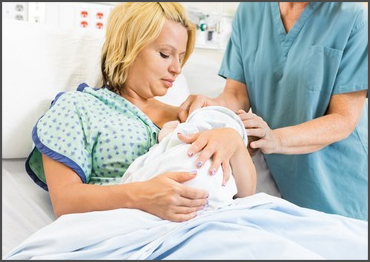
Sometimes the doctor may insert a tube into the lungs to take a sample of the lung fluid. The fluid is then tested to see what type of bacterium or virus is causing the infection, so that the doctor can choose the most effective drug to treat it.
Babies with pneumonia are generally treated with antibiotics. They also may need additional oxygen until the infection clears up.
E) Respiratory distress syndrome (RDS): Babies born before 34 weeks of pregnancy often develop this serious breathing problem. RDS is sometimes called hyaline membrane disease.
Babies with RDS lack a chemical mixture called surfactant, which keeps the small air sacs in the lungs from collapsing. Treatment with surfactant helps affected babies breathe more easily.
Babies with RDS also may receive a treatment called continuous positive airway pressure (C-PAP). The air may be delivered through small tubes inserted into the baby's nose or windpipe.
As with surfactant treatment, C-PAP helps keep small air sacs from collapsing. C-PAP helps your baby breathe, but does not breathe for him. The sickest babies may temporarily need to be put on a ventilator while their lungs recover.
3) Congenital Heart Defects
These heart defects are present at birth. They originate in the early part of pregnancy when the heart is forming.
A) Bradycardia: Premature babies sometimes do not breathe regularly. Interrupted breathing, also called apnea, can cause bradycardia. This is an unhealthy, slow heart rate.
When they occur together, NICU staff call apnea and bradycardia "A's and B's." Treatments include medicines and breathing support.
Coarctation of the aorta: The aorta is the large artery that sends blood from the heart to the rest of the body. In this condition, the aorta may be too narrow for the blood to flow evenly.
A surgeon can cut away the narrow part and sew the open ends together, replace the constricted section with manmade material, or patch it with part of a blood vessel taken from elsewhere in the body. Sometimes, this narrowed area can be widened by inflating a balloon on the tip of a catheter inserted through an artery.

B) Heart valve Abnormalities: Some babies are born with heart valves that are narrowed, closed, or blocked, and this condition prevents blood from flowing smoothly. Some babies may need to have a shunt (artificial graft) placed to allow blood to bypass the blockage until the baby is big enough to have the valve repaired or replaced.
C) Patent Ductus Arteriosus (PDA): PDA is the most common heart problem in premature babies. Before birth, much of a fetus's blood goes through a passageway (ductus arteriosus) from one blood vessel to another, instead of through the lungs. This is because the lungs aren't yet in use.
This passageway should close soon after birth, so the blood can take the normal route from heart to lungs and back. If it doesn't close, blood doesn't flow correctly. In some cases, drug treatment can help close the passageway. If that doesn't work, surgery can also close it.
D) Septal Defects: A septal defect refers to a hole in the wall (septum) that divides the two upper or lower chambers of the heart. Because of this hole, the blood cannot circulate as it should, and the heart has to work extra hard.
A surgeon can close the hole by sewing or patching it. Small holes may heal by themselves and may not need repair at all.
E) Tetralogy of Fallot: In this condition, a combination of four heart defects keeps some blood from getting to the lungs. As a result, a baby's skin can sometimes look blue from a lack of oxygen (cyanosis), and he may grow poorly. New surgical techniques allow this complex heart defect to be repaired early in life.
F) Transposition of the great Arteries: In this condition, the positions of the two major arteries leaving the heart are reversed. Each artery arises from the wrong pumping chamber. Surgical advances have enabled correction of this defect in the newborn period.

4) Feeding Issues
Experts agree that breast milk provides many wonderful and vital health benefits for newborns, especially premature or sick babies. A baby needs good nutrition to grow and become stronger. But he may need to be fed a different way for a while, before he is ready for the breast or a bottle.
Babies who are very small or sick are often fed through a vein (intravenously). A tiny needle is placed in a vein in the baby's hand, foot, scalp, or belly button. He'll receive sugar (glucose) and essential nutrients through the vein.
As soon as the baby is strong enough, he'll be fed breast milk or formula through a tube placed through the nose or mouth into the stomach or intestines. This is called gavage feeding.
In gavage feeding, the tube may be left in place or inserted at each feeding. Inserting the tube shouldn't bother the baby too much because babies this small generally don't gag.
When the baby can suck and swallow effectively, gavage feedings will be stopped, and the baby will be able to breastfeed or bottle-feed.
Many babies in NICUs start trophic (minimal) feeds shortly after birth. This is done to stimulate the baby's intestine until he's strong enough to tolerate larger feedings.
5) Gastroschisis
This is a birth defect of the abdominal wall. The baby's intestines, and sometimes other organs, are outside of the baby's abdomen. Surgery is done to put the baby's organs back in place and close the abdominal wall.
6) Hypoglycemia
Hypoglycemia is low blood sugar (glucose). It's usually diagnosed in a baby shortly after birth. Babies born to mothers with diabetes have their glucose levels checked regularly to assess for hypoglycemia. Early feeding and an intravenous glucose solution help to prevent and treat hypoglycemia.

7) Inability to Control Body Heat
Babies who are born too small and too soon often have trouble controlling their body temperature. Unlike healthy, full-term babies, they don't have enough fat to prevent the loss of heat from their body.
Babies in the NICU are placed in an incubator or warmer right after birth to help control their temperature. A tiny thermometer taped to the baby's stomach senses his body temperature and regulates the heat in the incubator. A baby will grow faster if he maintains a normal body temperature (98.6 degrees F.).
A baby with this condition grows more slowly than usual in utero, and is smaller than normal for his gestational age at birth.
IUGR is ordinarily diagnosed during pregnancy through an ultrasound. It usually is due to fetal or maternal complications. Upon admission to the NICU, babies are tested to determine possible causes, although this isn't always able to be determined.

9) Intraventricular Hemorrhage (IVH)
IVH refers to bleeding in the brain and is most common in the smallest premature babies (those weighing less than 3 1/3 pounds). The bleeds usually occur in the first four days of life.
Bleeding generally occurs near the fluid-filled spaces (ventricles) in the center of the brain. An ultrasound examination can show whether a baby has had a brain bleed and how severe it is.
Brain bleeds are usually given a number from 1 to 4, with 4 being the most severe. Most brain bleeds are mild (grades 1 and 2) and resolve themselves with no or few lasting problems.
More severe bleeds can cause difficulties for the baby during the hospitalization and possible complications in the future. Some will require careful monitoring of the baby's development throughout infancy and childhood.
1O) Jaundice
Babies with jaundice have a yellowish color to their skin and eyes. Jaundice occurs when the liver is too immature or sick to remove a waste product called bilirubin from the blood.
Bilirubin is formed when old red blood cells break down. Jaundice is especially common in premature babies and in babies who have blood type incompatibilities with their mothers (such as Rh disease, ABO incompatibility, or G6PD disease).
Jaundice itself doesn't usually cause harm to a baby. But a very high bilirubin level can result in more serious problems, especially for premature babies.
For this reason, the baby's bilirubin level is checked frequently. If it gets too high, he's treated with special blue lights (phototherapy) that help the body break down and eliminate bilirubin.
Occasionally, a baby will need a special type of blood transfusion called an exchange transfusion to reduce very high bilirubin levels. In this procedure, some of the baby's blood is removed and replaced with blood from a donor.
11) Macrosomia
A condition in which a baby is born with excessive birth weight, that is, 4,500 grams (9 pounds, 14 ounces) or more. This is commonly due to maternal diabetes and may require delivery by cesarean section. These babies are also monitored for hypoglycemia.

12) Necrotizing Enterocolitis (NEC)
This potentially dangerous intestinal problem most commonly affects premature babies. The bowel may become damaged when its blood supply is decreased. Bacteria that are normally present in the bowel invade the damaged area, causing more damage.
Babies with NEC develop feeding problems, abdominal swelling, and other complications. If tests show that a baby has NEC, he'll be fed intravenously while his bowel heals. Sometimes damaged sections of intestine must be surgically removed.

ROP is an abnormal growth of blood vessels in the eye. It occurs most often in babies born before 30 weeks of pregnancy.
ROP can lead to bleeding and scarring that can damage the eye's retina (the lining at the rear of the eye that relays messages to the brain). This can result in vision loss.
An ophthalmologist (eye doctor) can examine the baby's eyes for signs of ROP
Most mild cases heal without treatment, with little or no vision loss. In more severe cases, the ophthalmologist may perform laser therapy or do a procedure called cryotherapy (freezing) to eliminate abnormal blood vessels and scars. Both treatments help protect the retina.
14) Sepsis
Some babies are admitted to the NICU to determine whether they have this potentially dangerous infection of the bloodstream. The infection is caused by a germ that the baby has had difficulty fighting off.
Certain lab tests, cultures, and X-rays can help diagnose this condition. These tests may be recommended if your baby has symptoms such as temperature instability, high or low blood sugar levels, breathing problems, or low blood pressure.
The condition is treated with antibiotics, and the baby is monitored closely for an improvement in symptoms.
